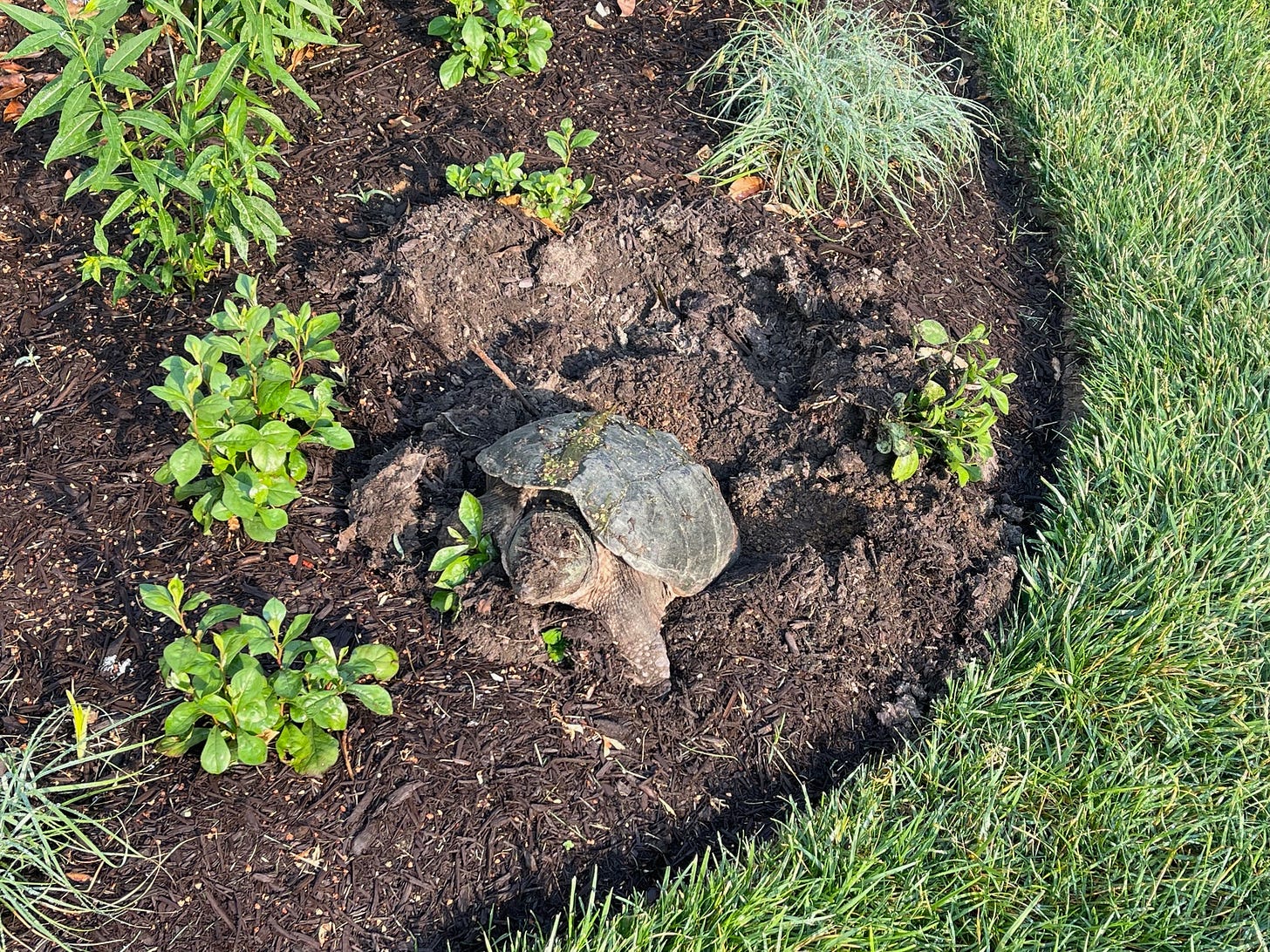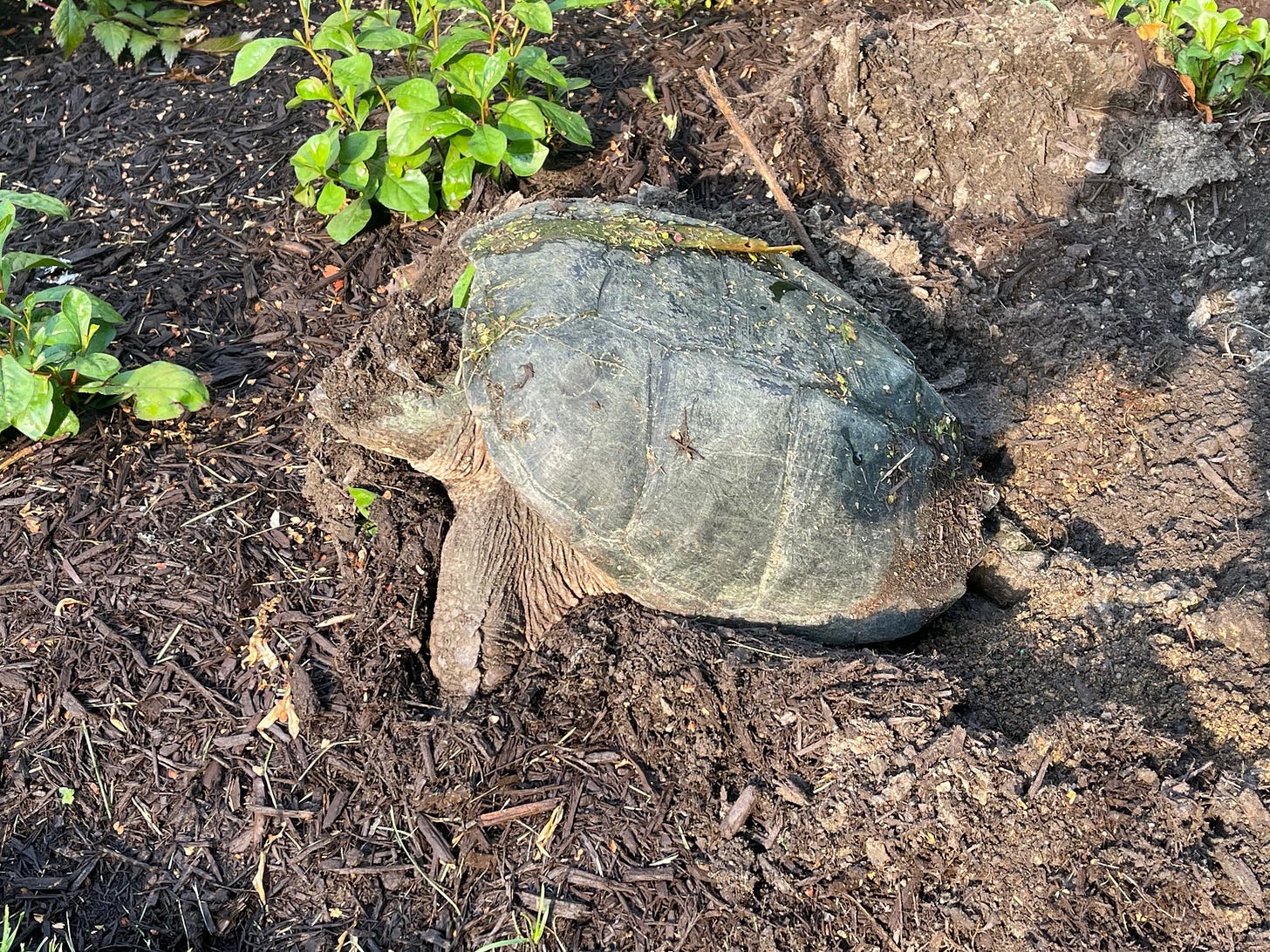"It Will Grow Back"
My take on four words guaranteed to make a Type A Gardener lose his or her mind. Even worse than someone telling you to “relax.”
After last week’s post, dozens of sharp-eyed readers, (well, my brother, Larry) contacted me to let me know I already published the post on How to Become a Gardening Expert in One Day. If you read it, you can already fool everyone around you about your gardening brilliance. If you haven’t read it and were looking forward to reading about it in today’s blog, I’m pleased to report it was published on January 5th and you can find it resting comfortably in the blog’s archives. There’s a lot of other good stuff in the archives. If you have time you might consider taking a look.
For most people, “it will grow back” is a forward-looking, positive statement of hope and trust in the future. For experienced gardeners, I’m certain it has little to do with hope and trust, and more to do with knowledge based on their own history of observing plants “come back” from whatever ailed them. Apparently the “it will grow back” philosophy gives one a sense of peace and tranquility. I once wrote a blog when I was still working in my investment practice, called “the sweet sleep of the certain,” where I poked fun at investors who had “faith” that markets would go in the direction they forecast, and were able to sleep peacefully because of it, while I, uncertain about the future and skeptical of all forecasts, couldn’t sleep a wink. The gardeners who preach the “it will grow back” mantra sleep the sweet sleep of the certain. I’m so jealous.
For Type A gardeners, this statement means something completely different. For us, when someone tells you, “It will grow back,” it is very similar to when someone tells you to “relax.” It is a statement guaranteed to have the opposite effect it was intended to have. The well-meaning intent is to reduce someone’s level of angst and anxiety, but instead, “It will come back” raises the stress level of Type A’s because it clearly indicates that a disaster of some magnitude has just occurred in your garden and no one can fix it. Additional tension is unintentionally created because usually the time frame for it to come back is too long to bear. For a Type A gardener who has patiently waited (patience is not a strong suit for Type A gardeners) to see the successful result of their gardening efforts, the notion of having to wait weeks, or months, or longer, for a plant to recover is completely unacceptable. UNACCEPTABLE. Some Type A’s (meaning me) often find themselves staring at a damaged plant, day after day, looking for some sign that nature’s repair job is underway. To find yourself staring at a plant and waiting for it to grow is about as bad as it gets. Let’s face it. It’s embarrassing. It’s pathetic.
Let me share a few stories about plants that I’m hoping will come back.
I’m infatuated with shasta daisies. The flowers proudly waive over the top of the plant and the white and yellow colors always seem to catch my attention. I have planted six shasta daisies in my sun bed, and most of them died, thankfully not at the same time. My friends at Sun Nurseries seem perplexed at my inability to grow these plants because by all accounts they are easy to grow and maintain. But apparently, not for me. (They have charitably offered that it’s been an unusually hot summer, but that’s what they said to me last year.)
After digging up one of the plants that I thought was dead, I noticed two small roots sticking out of the root ball that were still alive. The odds of this plant surviving are miniscule, but I found myself digging a hole, adding compost and topsoil, and gingerly replacing the nearly dead plant in the bed. I cut it back to a few inches above ground and settled in to wait for some signs of growth. I haven’t seen any evidence that the plant is going to make it, but it’s still early. I know this because I stare at it just about every day. I will wait until next spring to assess whether it will actually “come back.” My behavior when it comes to observing this plant is definitely not healthy.
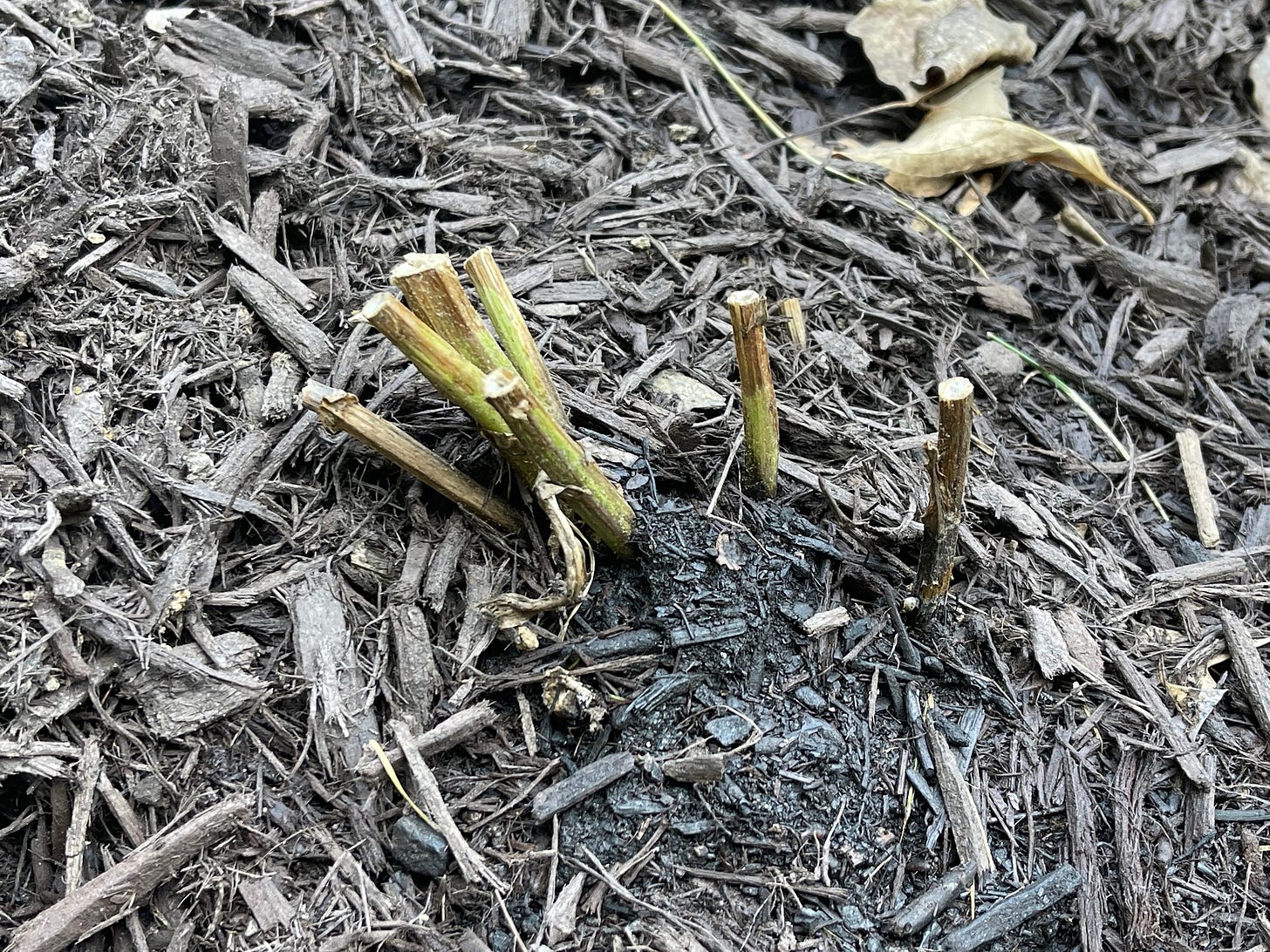
Then there is the story of the plumbago in my back bed. I bought ten plants and installed them in the early spring. The very next morning (yes, the very next morning) I was surprised to find that five of the plants had been eaten by deer. Two had been pulled up by the roots and the others had been chewed down to ground level. There was nothing to do but replant the plants that had been pulled out of the ground by the deer, say a prayer for the plants that had been chewed down to ground level, and patiently wait for them to grow back.
As April and May passed the plumbago did indeed recover, and I was feeling good about my new, somewhat Zen, approach to being patient during a time of garden crisis. In early June, I was out inspecting my garden on Morning Patrol when, to my amazement, I found a large turtle laying its eggs in my plumbago bed. (You can’t tell from the pictures, but this was one BIG turtle.) It had used its fins to clear a space for her eggs, and the result was that every flower in the bed in a circumference of about five feet was disturbed, if not entirely uprooted. I’ve heard of deer eating your plants, but never a turtle laying eggs. The startled turtle, which I subsequently found out was a mature snapping turtle that could bite my fingers off if I wasn’t careful, eventually made its way back to the woods and I was left, once again, to replant my plumbago. This was quite a test for a Type A gardener, since it was clear that there was nothing to be done but patiently wait for the plants to recover. (author’s note: They recovered in a spectacular fashion making them one of my favorite plants in the garden and a finalist for a Golden Garden Award.)
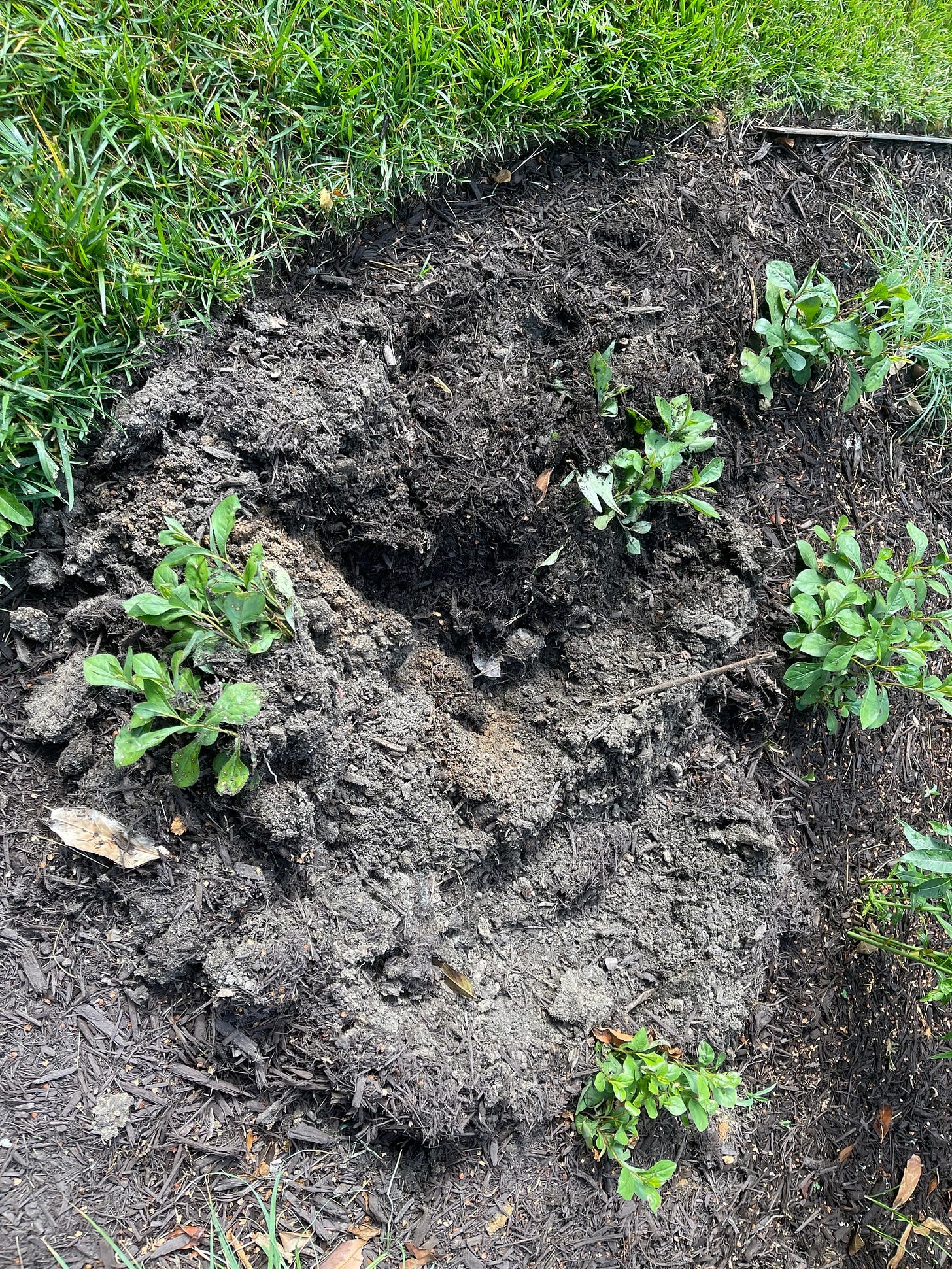
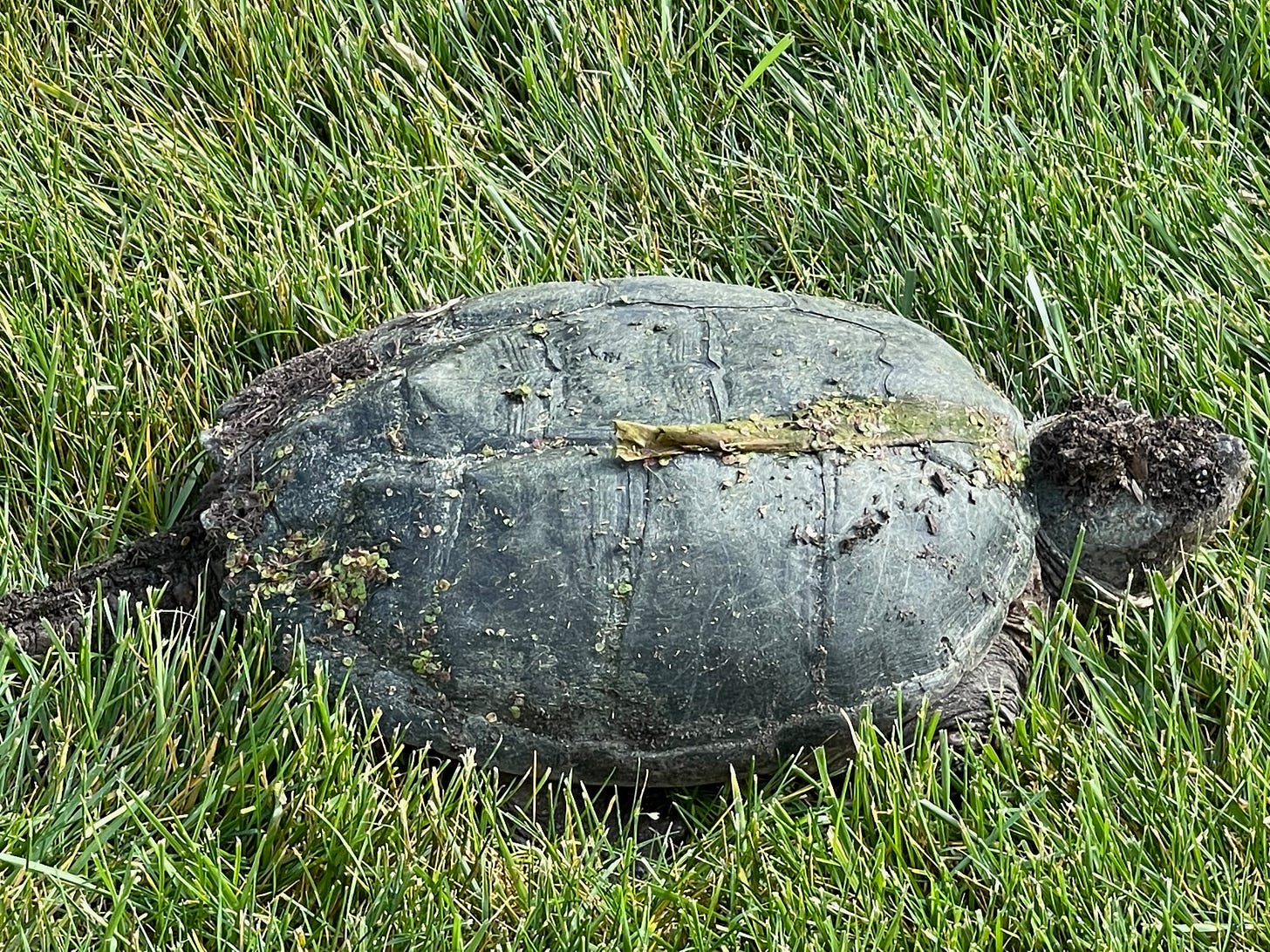
One last story about “it will come back” is the story of my Japanese painted ferns. The 2022 garden design included nine Japanese painted ferns planted at the top of the steps leading from my driveway down to my back patio, and in a small bed beneath the Dogwood tree at the bottom of the steps.
To say that these plants have struggled is an understatement. The plants at the top of the steps are the worst. In a few cases you can barely see them at all, with just a few small fronds breaking the surface of the soil. In a fit of desperation, earlier this year I transplanted all of the Japanese painted ferns that were planted at the top of the steps to the bed under the Dogwood tree at the bottom of the steps. I’m carefully watering (perhaps overwatering?) these plants, hoping that they will come back next year. But of course, I will have to patiently wait until spring to see if the ferns are making any progress. My wife, Linda, recent walked by this part of the garden, looked at me, and calmly said, “they will come back.” I’m so relieved.
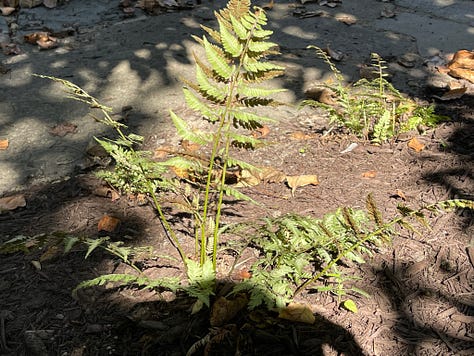

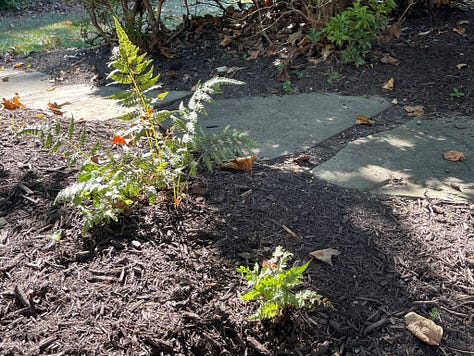
I think waiting for plants to come back may be the ultimate litmus test for Type A gardeners wondering if they will ever recover from a lifetime of demanding that projects be completed on time and under budget. I want to sleep the sweet sleep of the certain. I want to see a plant that obviously has no chance of living and give it the benefit of the doubt. After all, there is another strategy for dealing with the “it will come back,” conundrum. That would be to assume that the plant will not come back, happily go to the nursery, get my 50% discount on a replacement plant, and probably spend $5 on a baby plant that I can install immediately. I know this isn’t exactly the spirit of peace, tranquility, and acceptance that I’m trying to cultivate, but as a Type A, I’m just sayin…..
Join me next week as we continue our tour of the garden. Please feel welcome to explore the posts in the archives. And if you find yourself entertained, share this site with a friend or colleague.





